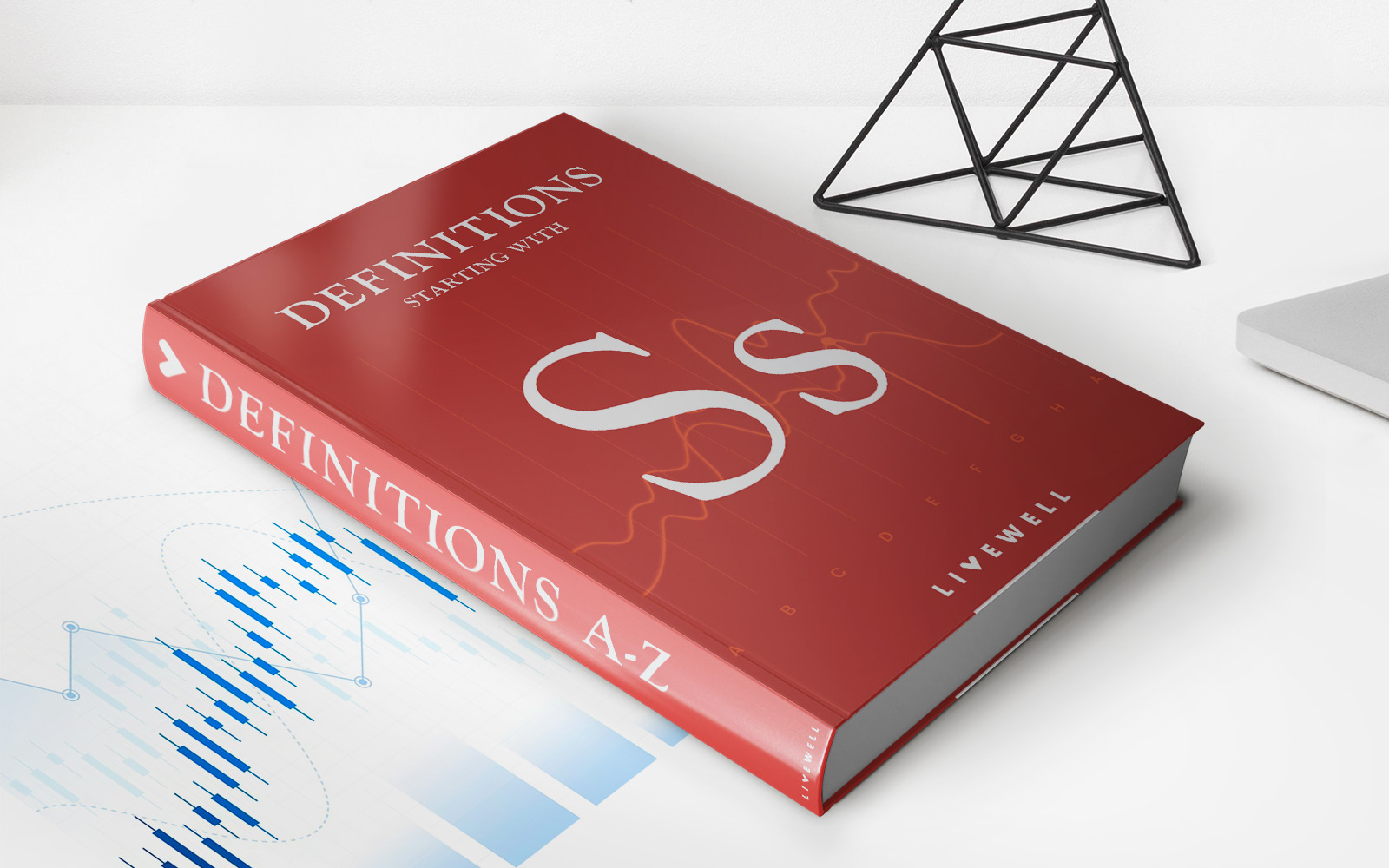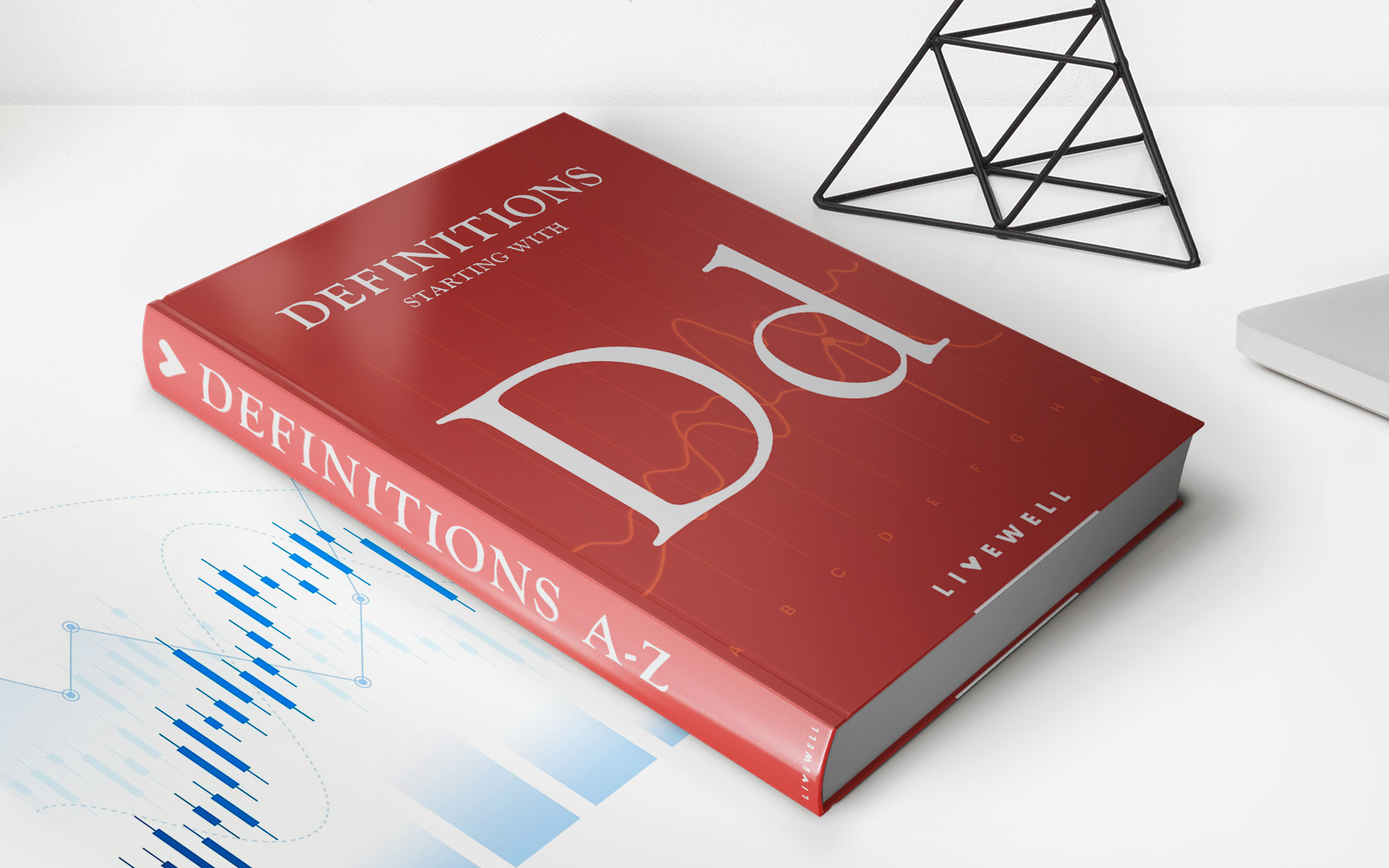

Finance
What Is A Roth 401K Deferral
Modified: December 30, 2023
Discover the benefits of a Roth 401K deferral and how it can help you maximize your retirement savings. Take control of your finance with this powerful investment option.
(Many of the links in this article redirect to a specific reviewed product. Your purchase of these products through affiliate links helps to generate commission for LiveWell, at no extra cost. Learn more)
Table of Contents
Introduction
When it comes to retirement planning, there are several options available to help you save for your future. One popular choice that has gained traction in recent years is the Roth 401K deferral. This unique retirement savings vehicle offers individuals the opportunity to contribute after-tax dollars towards their retirement, providing potential tax benefits down the line.
In this article, we will delve into the world of Roth 401K deferral and explore its various features and advantages. Whether you are a young professional just starting your career or a seasoned employee preparing for retirement, understanding the ins and outs of the Roth 401K deferral can help you make informed decisions about your financial future.
From eligibility and contribution limits to tax implications and comparisons with other retirement savings options, we will cover everything you need to know about Roth 401K deferral. So, let’s dive in and explore the world of this unique retirement savings strategy.
Overview of Roth 401K Deferral
The Roth 401K deferral is a retirement savings option that allows individuals to contribute a portion of their income to a designated retirement account. It is similar to a traditional 401K plan, but with one key difference: the contributions made to a Roth 401K are made with after-tax dollars, meaning that withdrawals made during retirement are tax-free.
Unlike a traditional 401K plan, where contributions are made with pre-tax dollars and taxes are paid upon withdrawal, the Roth 401K deferral offers individuals the opportunity to potentially maximize their retirement savings by taking advantage of tax-free growth. This can result in significant tax savings in retirement, as the withdrawals are not subject to federal income tax.
Additionally, the Roth 401K deferral also offers the benefit of tax-free qualified distributions, provided certain conditions are met. This means that as long as the account has been open for at least five years and the individual is at least 59.5 years old, withdrawals can be made without incurring any additional tax liability.
Another distinguishing factor of the Roth 401K deferral is that it does not have income restrictions. This means that individuals of any income level can contribute to a Roth 401K, unlike a Roth IRA which has income limitations. This makes it a valuable retirement savings option for high-income earners who are looking to diversify their tax situation in retirement.
It’s important to note that the Roth 401K deferral is typically offered by employers as part of their employee retirement benefits package. As an employee, you have the option to contribute a portion of your salary into the Roth 401K account, subject to certain contribution limits set by the Internal Revenue Service (IRS).
Now that we have an overview of the Roth 401K deferral, let’s explore the benefits it offers and why it might be a suitable option for your retirement savings goals.
Benefits of Roth 401K Deferral
Choosing to utilize the Roth 401K deferral as part of your retirement savings strategy can offer several advantages. Let’s explore some of the key benefits:
1. Tax-Free Withdrawals: One of the primary advantages of the Roth 401K deferral is that qualified withdrawals made during retirement are tax-free. This can potentially save you a significant amount of money in taxes compared to traditional 401K plans, where withdrawals are subject to regular income tax rates.
2. Tax Diversification: By contributing to a Roth 401K, you are diversifying your retirement savings between pre-tax and after-tax accounts. This can provide flexibility in managing your tax liability during retirement, as you will have the option to withdraw from both types of accounts, strategically planning to minimize your tax burden.
3. Potential for Greater Wealth Accumulation: Since contributions to the Roth 401K are made with after-tax dollars, the growth and earnings generated within the account are tax-free. This can potentially result in larger retirement savings over the long term, as you are not paying taxes on the gains.
4. No Required Minimum Distributions (RMDs): Roth 401K deferral accounts are not subject to required minimum distributions (RMDs) during your lifetime. Unlike traditional retirement accounts, which mandate that you begin taking distributions by a certain age, Roth 401K deferral accounts allow you to maintain the funds in the account for as long as you wish.
5. Flexibility: The Roth 401K deferral allows for greater flexibility in accessing your funds. While it is generally advised to leave retirement savings untouched until retirement, life can present unexpected circumstances where access to funds may be necessary. With a Roth 401K, you can withdraw your contributions (not earnings) penalty-free at any time, giving you more flexibility and control over your money.
6. Estate Planning Benefits: The Roth 401K deferral also offers potential benefits for estate planning purposes. Since the funds passed down to beneficiaries are tax-free, it can be a valuable tool for transferring wealth to future generations with reduced tax consequences.
These are just a few of the benefits that the Roth 401K deferral can provide. It is important to assess your individual financial situation and consult with a financial advisor to determine if the Roth 401K deferral aligns with your retirement goals and overall financial strategy.
Eligibility and Contribution Limits
Eligibility for the Roth 401K deferral is typically determined by your employer’s retirement benefits program. Most employers that offer a traditional 401K plan also offer the option to participate in a Roth 401K. However, it’s important to check with your employer to confirm if this option is available to you.
Unlike a Roth IRA, which has income limitations, the Roth 401K deferral does not impose any income restrictions. This means that regardless of your income level, you can contribute to a Roth 401K as long as your employer offers this option.
When it comes to contribution limits, the Internal Revenue Service (IRS) sets annual limits to ensure that individuals do not exceed certain thresholds. For 2021, the maximum contribution limit for a Roth 401K deferral is $19,500 for individuals under 50 years of age. If you are 50 years of age or older, you can make an additional catch-up contribution of up to $6,500, bringing your total contribution limit to $26,000.
It’s important to note that these contribution limits apply to your combined contributions to both a traditional 401K and a Roth 401K deferral. Therefore, if you contribute $10,000 to your traditional 401K, you can only contribute a maximum of $9,500 to your Roth 401K deferral for that year.
Furthermore, it’s worth mentioning that employer contributions, such as matching contributions, can only be made to the traditional 401K and not the Roth 401K deferral. These employer contributions are typically made with pre-tax dollars and are subject to regular income tax when withdrawn during retirement.
It’s important to regularly review and assess your contributions to ensure that you are maximizing the benefits of the Roth 401K deferral while staying within the contribution limits set by the IRS.
Now that we have covered eligibility and contribution limits, let’s explore how the Roth 401K deferral works in practice.
How Roth 401K Deferral Works
Understanding how the Roth 401K deferral works is essential to make the most of this retirement savings option. Here are the key components of how it operates:
1. Contribution Setup: To start contributing to a Roth 401K deferral, you need to inform your employer that you want to allocate a portion of your salary towards this account. You can typically choose a specific percentage or dollar amount to contribute from each paycheck. Remember that the contributions to a Roth 401K are made with after-tax dollars.
2. Investment Options: Once your contributions are deducted from your paycheck, those funds are then invested in your chosen investment options within the Roth 401K account. Most plans offer a range of investment options, such as stocks, bonds, mutual funds, and target-date funds. It’s important to review and select investments that align with your risk tolerance and long-term financial goals.
3. Tax Treatment: Since contributions to a Roth 401K deferral are made with after-tax dollars, you won’t receive a tax deduction in the year of contribution. However, the growth and earnings within the account are tax-free. This means you won’t owe taxes on the investment gains or when you withdraw the funds during retirement, given certain conditions are met.
4. Vesting and Portability: If your employer offers a matching contribution to your Roth 401K deferral, there may be vesting requirements. Vesting refers to the period of time you must work for the employer before you gain full ownership of the matching contributions. Additionally, if you change jobs, you can typically roll over your Roth 401K funds into a Roth IRA or into the Roth 401K of your new employer.
5. Monitoring and Adjustments: It’s important to regularly review and monitor your Roth 401K account to ensure that it aligns with your long-term financial goals. You may need to make adjustments to your contribution rate or investment options based on changes in your financial situation, risk tolerance, or retirement timeline.
By understanding how the Roth 401K deferral works and staying actively engaged with your retirement planning, you can make informed decisions to maximize the benefits of this savings vehicle.
Tax Implications of Roth 401K Deferral
Understanding the tax implications of the Roth 401K deferral is crucial in assessing its suitability for your retirement savings strategy. Here are the key tax considerations to keep in mind:
1. Contributions: Contributions made to a Roth 401K deferral are made with after-tax dollars. This means that you do not receive a tax deduction in the year of contribution. While this may seem like a disadvantage compared to a traditional 401K, where contributions are made with pre-tax dollars, the benefit lies in the tax treatment of withdrawals during retirement.
2. Tax-Free Growth: One of the primary advantages of the Roth 401K deferral is the potential for tax-free growth. As the investments within the account generate earnings, those gains are not subject to taxation. This can lead to significant tax savings and potentially greater wealth accumulation over time.
3. Qualified Distributions: To qualify for tax-free withdrawals in retirement, certain conditions must be met. Firstly, the Roth 401K account must have been open for at least five years. Secondly, the individual must be at least 59.5 years old when making withdrawals. If these requirements are fulfilled, both the contributions and earnings can be withdrawn tax-free.
4. Required Minimum Distributions (RMDs): While Roth 401K deferrals are not subject to required minimum distributions (RMDs) during the account holder’s lifetime, beneficiaries may be required to take distributions after the account owner’s death. It’s important to consult with a tax professional or financial advisor to understand the specific rules regarding RMDs for Roth 401K accounts inherited by beneficiaries.
5. Tax Diversification: Opting for a Roth 401K deferral provides tax diversification in retirement. By having a mix of tax-free Roth 401K withdrawals and potentially taxable income from other sources such as Social Security benefits or traditional 401K withdrawals, you gain flexibility in managing your tax liability during retirement.
It’s important to note that tax laws and regulations can change over time. Therefore, it’s prudent to consult with a tax advisor or financial professional to fully understand the tax implications specific to your individual circumstances.
Now that we have explored the tax considerations of the Roth 401K deferral, let’s compare it to the traditional 401K to understand the differences.
Traditional 401K vs. Roth 401K Deferral
When it comes to retirement savings, both the traditional 401K and the Roth 401K deferral offer valuable benefits. Understanding the differences between these two options can help you make an informed decision about which one is best for your needs. Here’s a comparison:
Tax Treatment: The primary difference between the traditional 401K and the Roth 401K deferral lies in their tax treatment. Contributions to a traditional 401K are made with pre-tax dollars, reducing your taxable income for the year of contribution. However, withdrawals during retirement are subject to regular income tax. With a Roth 401K deferral, contributions are made with after-tax dollars, but qualified withdrawals in retirement are tax-free.
Tax Planning: The choice between a traditional 401K and a Roth 401K deferral can depend on your current and future tax situation. If you anticipate being in a higher tax bracket in retirement or want to diversify your tax liability, a Roth 401K may be beneficial. If you expect to be in a lower tax bracket during retirement or desire upfront tax savings, a traditional 401K may be more advantageous.
Employer Contributions: Both traditional and Roth 401K plans allow for employer contributions, such as matching contributions. Employer contributions are typically made with pre-tax dollars and are deposited into the traditional 401K account. It’s important to note that employer contributions cannot be allocated to the Roth 401K deferral account.
Required Minimum Distributions (RMDs): Traditional 401K plans require individuals to start taking required minimum distributions (RMDs) by April 1st of the year following the year they turn 72. This means you must begin withdrawing a specific percentage from your account, which is subject to income tax. With the Roth 401K deferral, RMDs are not required during your lifetime, allowing you to maintain the funds in the account for as long as you wish.
Contribution Limits: The contribution limits for both traditional and Roth 401K plans are set by the IRS. For 2021, the maximum contribution limit is $19,500, with an additional catch-up contribution of $6,500 for individuals aged 50 and older. It’s important to note that these limits apply to the combined contributions made to both types of accounts.
Choosing between a traditional 401K and a Roth 401K deferral depends on various factors, including your current income, tax situation, future retirement plans, and personal preferences. It may be beneficial to consult with a financial advisor or tax professional to determine which option is most suitable for your unique circumstances.
Now that we have compared the traditional and Roth 401K options, let’s explore some considerations to keep in mind when choosing the Roth 401K deferral.
Considerations before Choosing Roth 401K Deferral
Before deciding to contribute to a Roth 401K deferral, it’s important to consider a few key factors. Understanding these considerations can help you make an informed choice about whether this retirement savings option aligns with your financial goals. Here are some things to keep in mind:
1. Current and Future Tax Situation: Assess your current income and tax bracket. If you are in a higher tax bracket now but expect to be in a lower tax bracket in retirement, a traditional 401K with upfront tax savings may be more advantageous. However, if you anticipate being in the same or a higher tax bracket during retirement, the tax-free withdrawals of a Roth 401K deferral can be more beneficial.
2. Flexibility and Access to Funds: Consider your need for flexibility and access to funds. With a Roth 401K deferral, you have the ability to withdraw your contributions (not earnings) penalty-free at any time. This can be advantageous in case of emergencies or unexpected financial needs. However, keep in mind the importance of leaving retirement savings untouched to ensure long-term financial security.
3. Retirement Timeline: Evaluate your retirement timeline. The longer the time horizon until retirement, the more opportunity your contributions have to grow in a tax-free environment within the Roth 401K. This can potentially result in greater wealth accumulation compared to traditional 401K plans.
4. Future Income Expectations: Consider how your income may change in the future. If you anticipate your income increasing significantly over time, contributing to a Roth 401K deferral now can help diversify your tax situation in retirement when you may have higher income.
5. Compatibility with Other Retirement Accounts: Assess how the Roth 401K deferral works in conjunction with other retirement accounts, such as Roth IRAs or traditional IRAs. Understanding the contribution limits, withdrawal rules, and tax implications can help you plan a comprehensive retirement savings strategy.
It’s important to carefully evaluate these considerations and consult with a financial advisor or tax professional before committing to a Roth 401K deferral. Analyzing your unique financial circumstances and retirement goals can help you make an informed decision that supports your long-term financial well-being.
Now, let’s compare the Roth 401K deferral to another popular retirement savings option – the Roth IRA.
Comparison with Roth IRA
When planning for retirement, individuals often compare the Roth 401K deferral with another popular option – the Roth IRA. While both offer tax-free growth and tax-free qualified distributions, there are some key differences to consider. Let’s explore the comparison between the Roth 401K deferral and the Roth IRA:
1. Eligibility: The eligibility criteria for a Roth 401K deferral is typically determined by your employer’s retirement benefits program, while a Roth IRA is available to individuals who meet certain income limits set by the IRS. This means that high-income earners who are ineligible for a Roth IRA may still be able to contribute to a Roth 401K deferral.
2. Contribution Limits: Both the Roth 401K deferral and the Roth IRA have contribution limits set by the IRS. For 2021, the maximum annual contribution limit for a Roth IRA is $6,000, with an additional $1,000 catch-up contribution for individuals aged 50 and older. In contrast, the limits for a Roth 401K deferral are higher, starting at $19,500, with an additional catch-up contribution of $6,500 for individuals aged 50 and older.
3. Employer Contributions: While a Roth 401K deferral can potentially allow employer contributions, such as matching contributions, a Roth IRA does not have this feature. Employer contributions are typically made to a traditional 401K to take advantage of pre-tax benefits. However, it’s important to note that employer contributions are not allocated to the Roth 401K deferral portion of the account.
4. Required Minimum Distributions (RMDs): Roth 401K deferral accounts are subject to RMDs on inherited accounts, similar to traditional 401Ks. However, Roth IRAs are not subject to RMDs during the account owner’s lifetime, offering greater flexibility in managing retirement income.
5. Contribution Flexibility: With a Roth IRA, you have more control over your contributions as you can open and contribute to an account independently. On the other hand, a Roth 401K deferral is typically offered through an employer, and your contribution options may be limited to the available plan choices.
Considering these differences, the choice between a Roth 401K deferral and a Roth IRA depends on several factors, including your income, retirement goals, and access to employer-sponsored retirement plans.
It’s advisable to consult with a financial advisor or tax professional to evaluate your individual circumstances and determine which option—Roth 401K deferral or Roth IRA—best aligns with your long-term financial objectives.
Now, let’s summarize the key points and conclude our exploration of the Roth 401K deferral.
Conclusion
The Roth 401K deferral is a valuable retirement savings option that offers unique benefits and advantages. By contributing after-tax dollars, you can potentially enjoy tax-free growth and tax-free qualified distributions in retirement. This can lead to significant tax savings and provide flexibility in managing your tax liability during your golden years.
Before choosing the Roth 401K deferral, it’s essential to consider factors such as your current and future tax situation, retirement timeline, and income expectations. Evaluating these considerations, along with comparing the Roth 401K deferral to other retirement savings options like the traditional 401K and the Roth IRA, can help you make an informed decision that aligns with your financial goals and circumstances.
Keep in mind that the Roth 401K deferral is typically offered as part of an employer’s retirement benefits package. Checking with your employer about the availability and details of this option is crucial.
To make the most of the Roth 401K deferral, it’s recommended to review your contributions regularly, monitor your investment options, and adjust your strategy as needed. Consulting with a financial advisor or tax professional can provide personalized guidance and ensure that your retirement savings approach is well-suited to your individual needs.
As you embark on your retirement savings journey, remember that preparation and informed decision-making are key. By leveraging the benefits of the Roth 401K deferral, you can take significant steps towards building a financially secure future and enjoying the retirement lifestyle you envision.














